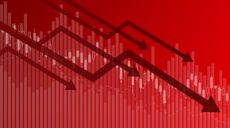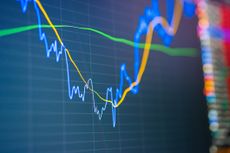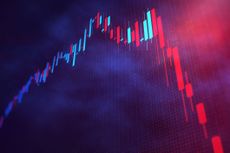It's a Bad Time to Invest in S&P 500 Index Funds
Fewer actively managed funds are beating Standard & Poor’s 500-stock index than at any time except the late 1990s. That won’t last.


Over time, most actively managed funds fail to beat Standard & Poor’s 500-stock index. No one with any sense questions that. But the S&P 500 has been on a tear over the past few years, making it difficult for even first-rate actively managed funds to keep up with the index. That makes it precisely the wrong time to plow money into an index fund that tracks the S&P—which millions of investors are doing.
Regardless of whether they focus on the S&P 500 or some other benchmark, index funds have one huge advantage over actively managed funds that cover the same territory: They have (or should have) dirt-cheap operating expenses. Some exchange-traded funds charge as little as 0.03% per year, or 30 cents for every $1,000 invested. The average actively managed, diversified domestic stock fund charges 1.20% per year. Over long periods of time, it’s hard for fund managers to overcome that fee disadvantage.
But the performance of S&P 500 index funds in recent years reflects far more than lower expenses. And so from 2013 through 2015, just 19% of actively managed domestic stock funds (excluding sector funds) outperformed the S&P. The only other times since the early 1960s that a smaller percentage of actively managed stock funds topped the index was during the two three-year periods that ended in 1997 and 1998—near the peak of that decade’s technology bubble. In those three-year periods, just 6% and 7%, respectively, of diversified U.S. stock funds outstripped the S&P.

Sign up for Kiplinger’s Free E-Newsletters
Profit and prosper with the best of expert advice on investing, taxes, retirement, personal finance and more - straight to your e-mail.
Profit and prosper with the best of expert advice - straight to your e-mail.
Just as stocks in different industry sectors run in cycles of feast and famine, the S&P also goes through multiyear cycles. It has periods like the current one when it beats virtually every actively managed fund, and subsequent cycles when its performance is well below that of the average fund.
Over the long haul, roughly one-third of actively managed stock funds have beaten the index—a much higher percentage than has been the case recently. And here’s the bad news: The past three times that the S&P beat the stuffing out of a huge percentage of actively managed funds, the stock market stood at or very near a peak—and was on the cusp of falling into a bear market.
I don’t think we’re on the verge of a bear market today, but the history is sobering. The run-up in large-company growth stocks in the late 1990s, including outrageous gains in the shares of many technology and telecommunications stocks, was followed by the 2000-02 bear market. The S&P tumbled 49.1%; the tech-laden Nasdaq plunged 77.6%.
That’s when actively managed funds began to do better relative to the S&P 500: More than half of actively managed stock funds beat the benchmark for seven straight three-year periods, starting with 1999-2001 and ending with 2005-07.
The third-best period for S&P 500 index funds came during the three-year stretch that ended in 1987, when just 25% of actively managed funds eclipsed the index. The stock market was on a tear in 1987, before it peaked on August 25. Less than two months later, on October 19, the market crashed. The Dow Jones industrial average lost 508 points, or 22.6%, and the S&P plummeted 20.4%. The bear market ended on December 4, with the S&P down 33.5% from peak to trough. Perhaps because of the bear market’s brevity, it wasn’t followed by a surge in relative performance of actively managed funds.
But then there was the three-year period that ended in 1974, when just 28% of domestic stock funds topped the S&P. That period coincided with the 1973-74 bear market, during which the S&P plummeted 48.2%. After that bear market, stocks of small companies rallied strongly until 1983. Largely for that reason, the average actively managed stock fund beat the S&P for all the three-year periods ending from 1976 through 1983.
Vanguard founder Jack Bogle introduced the S&P 500 index fund for individual investors in 1976, which turned out to be awful timing. No wonder critics mocked it as “Bogle’s Folly.” (The data for this article, by the way, comes from the Bogle Financial Research Center and Lipper.)
Why has it been so hard for fund managers to beat the S&P lately? The chief reason is that few managers concentrate on companies that are as large, as measured by market capitalization, as the firms in the S&P index. And mega-cap stocks, the biggest of the big, have shellacked other stocks recently.
In 2015, shares of the largest 25 companies in the S&P 500 beat the rest of the S&P by an astonishing 9.5 percentage points, according to data compiled by Scott Opsal, research director at the Leuthold Group, a Minneapolis-based investment research firm. In the first half of 2016, the most recent period for which Leuthold has data, the 25 biggest firms beat the rest of the S&P by 7 percentage points. Many of these mega caps, incidentally, are large tech stocks, such as Alphabet (symbol GOOGL), Amazon.com (AMZN) and Facebook (FB).
When do indexes (the S&P and others) tend to beat a huge percentage of actively managed funds? It’s not just near the top of bull markets. Work by John Rekenthaler, one of my favorite analysts at research firm Morningstar, shows that managers tend to lag during periods when their benchmark index is performing strongly. And managers tend to do better during periods when their benchmark index is doing poorly.
That makes sense: Fund managers, by definition, stray from their index. The managers make bets, whether by investing in stocks that are not in their benchmark or by overweighting or underweighting particular stocks or sectors. When those bets pan out, the managers will likely beat their index.
Should you own index funds? Sure. But if you spend some time selecting good actively managed funds, you’ll likely do just as well. I recommend investing in a mix of index and actively managed funds. When scouting for actively run funds, look for low costs; good long-term, risk-adjusted returns; and managers who invest heavily in the funds they run.
Investors are flocking to S&P 500 index funds as if they were the only game in town. Headlines question whether actively managed funds can survive. As is so often the case, the crowd appears to be doing the wrong thing. “This is the wrong time to load up on an S&P index fund,” Opsal warns. “Don’t chase performance.”

-
 It’s Tax Day: Is the Post Office Open Late?
It’s Tax Day: Is the Post Office Open Late?Tax Filing Tax Day is here and some people need to mail their federal income tax returns.
By Kelley R. Taylor Published
-
 Need to Build an Emergency Fund? Seven Steps to Get There
Need to Build an Emergency Fund? Seven Steps to Get ThereHaving a safety net can mean peace of mind on top of being able to maintain your lifestyle if a financial emergency strikes.
By Justin Stivers, Esq. Published
-
 Stock Market Today: Dow Sinks 475 Points After JPMorgan Earnings
Stock Market Today: Dow Sinks 475 Points After JPMorgan EarningsStocks sold off sharply Friday on disappointing bank forecasts and speculation that Iran is planning an attack on Israel.
By Karee Venema Published
-
 Stock Market Today: Nasdaq Leads as Magnificent 7 Stocks Rise
Stock Market Today: Nasdaq Leads as Magnificent 7 Stocks RiseStrength in several mega-cap tech and communication services stocks kept the main indexes higher Thursday.
By Karee Venema Published
-
 Stock Market Today: Stocks Tumble After a Hot Inflation Print
Stock Market Today: Stocks Tumble After a Hot Inflation PrintEquities retreated after inflation data called the Fed's rate-cut plans into question.
By Dan Burrows Published
-
 Stock Market Today: Stocks End Mixed Ahead of Key Inflation Reading
Stock Market Today: Stocks End Mixed Ahead of Key Inflation ReadingEquities struggled before tomorrow's big Consumer Price Index report.
By Dan Burrows Published
-
 Stock Market Today: Stocks Closed Mixed in Choppy Trading
Stock Market Today: Stocks Closed Mixed in Choppy TradingVolatility returned as market participants adjusted their expectations for rate cuts.
By Dan Burrows Published
-
 Stock Market Today: Stocks Rally After Blowout Jobs Report
Stock Market Today: Stocks Rally After Blowout Jobs ReportStocks soared into the weekend as investors brushed off strong payrolls data and lowered rate-cut expectations.
By Dan Burrows Published
-
 Stock Market Today: Stocks Swing Lower as March Jobs Report Looms
Stock Market Today: Stocks Swing Lower as March Jobs Report LoomsThe main indexes turned negative in mid-afternoon trading as all eyes turned to tomorrow morning's key employment update.
By Karee Venema Published
-
 Stock Market Today: Stocks End Mixed After Powell Speech
Stock Market Today: Stocks End Mixed After Powell SpeechIntel and Walt Disney were two of the worst Dow Jones stocks Wednesday.
By Karee Venema Published